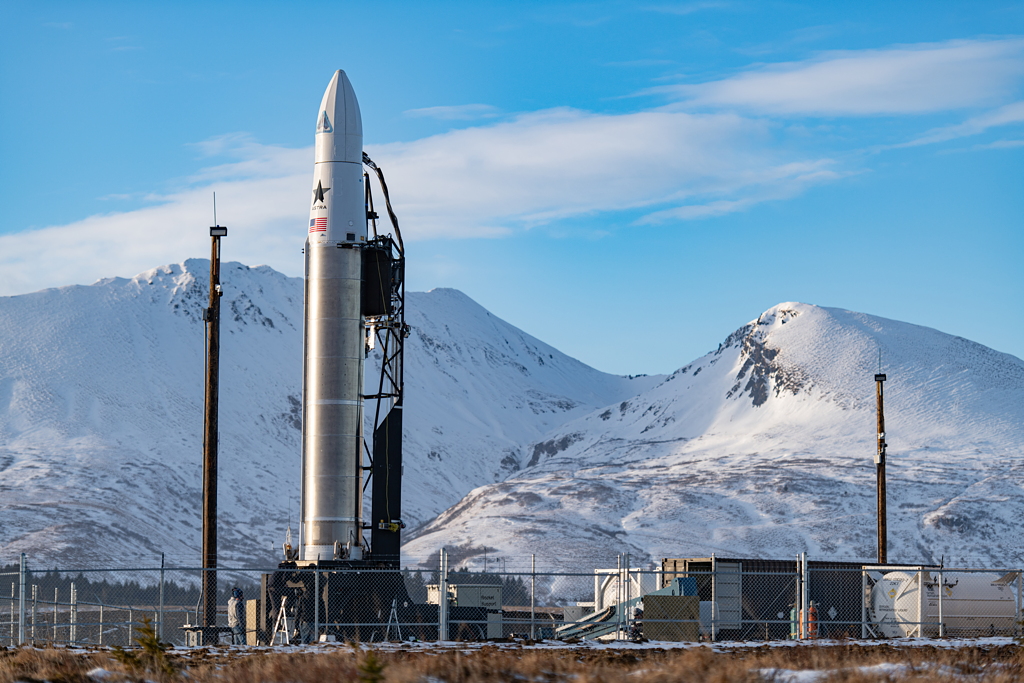Editor's note: Astra and DARPA have called off today's planned DARPA Launch Challenge liftoff due to bad weather at the launch site. Read our full story here. A new launch date is targeted for Monday, March 2.
The formerly stealthy startup Astra aims to win $2 million with its first-ever orbital launch Monday (March 2), and you can watch the liftoff live.
Astra's Rocket 3.0 is scheduled to lift off today from the Pacific Spaceport Complex in Kodiak Island, Alaska, during a three-hour window that opens at 3:30 p.m. EST (2030 GMT). You can watch it live here at Space.com, courtesy of the U.S. Defense Advanced Research Projects Agency (DARPA), or directly via DARPA.
DARPA is streaming the event because the liftoff is part of the DARPA Launch Challenge, an effort to spur the development of private American rockets capable of lofting small military satellites cheaply and on short notice.
Related: The most dangerous space weapons ever
If Astra aces today's launch, the California-based company gets $2 million. If it succeeds in a second launch from a different pad at the Pacific Spaceport Complex by March 18, another $10 million will come Astra's way.
Astra was founded in 2016 but just came out of stealth mode earlier this month. The company has conducted extensive testing at its Bay Area facilities but has not yet attempted an orbital launch, so success today is far from guaranteed.
Breaking space news, the latest updates on rocket launches, skywatching events and more!
Still, operational satellites are aboard the two-stage, 38-foot-long (11.6 meters) Rocket 3.0 for today's flight. The payloads are a Department of Defense communications cubesat called Prometheus; two other cubesats provided by the University of South Florida, which aim to demonstrate new communications tech; and a space traffic management beacon built by Virginia-based company Tiger Innovations.

These payloads weren't disclosed to Astra until Jan. 22. Keeping the company in the dark for so long is part of the DARPA Launch Challenge, which rewards flexibility and adaptability.
The cubesats will be deployed at a target altitude of 277 miles (445 kilometers), whereas the beacon will stay attached to Rocket 3.0's upper stage. But hitting the altitude mark precisely is not required to win the $2 million today. If Astra gets into Earth orbit above 93 miles (150 km), the mission will be considered a success, DARPA officials said during a media teleconference last week.
The DARPA Launch Challenge was first announced in 2018. Eighteen companies initially expressed interest, and three — Astra, Virgin Orbit and Vector Launch — eventually advanced to the "full participant" stage. Astra is the only competitor left.
Today's launch was originally scheduled for Tuesday (Feb. 25), but bad weather pushed the target date back.
- Military space: Spacecraft, weapons and tech
- Cubesats: Tiny payloads, huge benefits for space research
- Can we prevent war in space? These guidelines may help.
Mike Wall is the author of "Out There" (Grand Central Publishing, 2018; illustrated by Karl Tate), a book about the search for alien life. Follow him on Twitter @michaeldwall. Follow us on Twitter @Spacedotcom or Facebook.
OFFER: Save at least 56% with our latest magazine deal!
All About Space magazine takes you on an awe-inspiring journey through our solar system and beyond, from the amazing technology and spacecraft that enables humanity to venture into orbit, to the complexities of space science.
Join our Space Forums to keep talking space on the latest missions, night sky and more! And if you have a news tip, correction or comment, let us know at: community@space.com.

Michael Wall is a Senior Space Writer with Space.com and joined the team in 2010. He primarily covers exoplanets, spaceflight and military space, but has been known to dabble in the space art beat. His book about the search for alien life, "Out There," was published on Nov. 13, 2018. Before becoming a science writer, Michael worked as a herpetologist and wildlife biologist. He has a Ph.D. in evolutionary biology from the University of Sydney, Australia, a bachelor's degree from the University of Arizona, and a graduate certificate in science writing from the University of California, Santa Cruz. To find out what his latest project is, you can follow Michael on Twitter.

